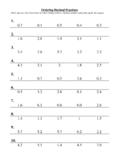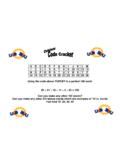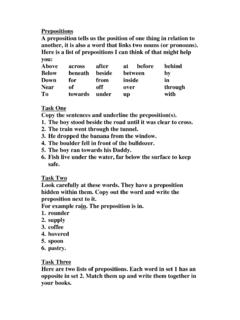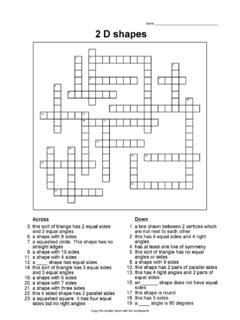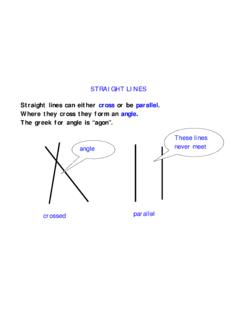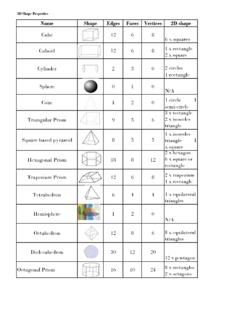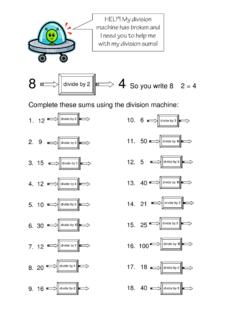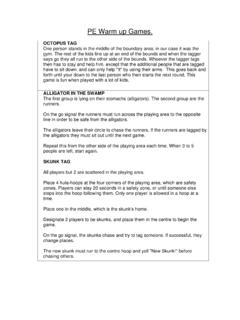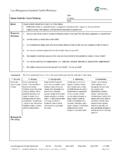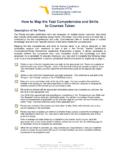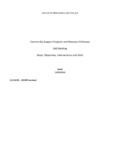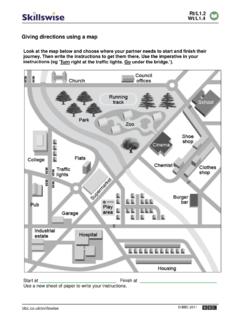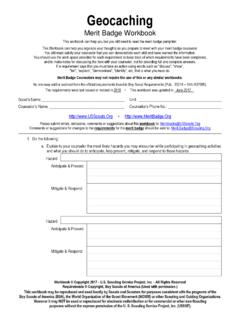Transcription of Geography Plan – Spring Term Year 3 – How can …
1 Geography plan Spring Term year 3 How can we improve the area we can see from our window? Week Learning Outcome Lesson Resources 1 observe & ask about geographical features to use geographical vocab to use secondary sources Look through whole book with class- pictures on OHPs. Discuss what changes they can see happening on each page and how the boy might be feeling about what he can see through the window. Children complete worksheet to record their ideas. More able to record in table in their books, less able worksheet. Worksheet 2 levels Colour OHPs 2 identify physical & human features Use geographical vocab use secondary sources identify land use Divide class into group give each group a laminated colour copy of 3 or 4 pages. Ask them to look at each page and record what they can see in each page, and then the changed between them. This can be done on A3. The class can then come back together and feed back their ideas to the other groups.
2 A3 recording sheets Laminated colour pictures 3 As above Using notes from last session children write the story for their series of pictures, focusing on change, land use and what it would feel like to be there. As above 4 ask and respond to geographical questions to use geographical vocab to identify physical and human features. Divide children into small groups and ask them to look through classroom window. Provide each group with a photograph of view on large piece of paper. Ask them to brainstorm around the outside of picture what they can see. When children have done this in small groups provide them with their own A4 version so they can make their own recording for their books. Enlarged pictures of classroom view. A4 version 5 ask and respond to geographical questions to use geographical vocab to identify physical and human features. Using sheet from last session in groups look again and see what things have changed cars in car park, people, bins children to list all the changes reasons for these.
3 Also record any questions they have about the view. What are the main features? What is the land used for? Why have the changes occurred. More able to record in table in their books, less able worksheet. Worksheet to record changes 6 ask and respond to geographical questions collect evidence to answer questions use field work skills identify physical & human features Discuss with children what they want to find out about the area through the window. Focus on key questions raised by groups. Prompt children into thinking about what features are located where they are. What are the key features? What are they where they are? 7 As above Take children to explore the area that can be seen from the window, focusing on selected features. Arrange for children to record what they see and discover as digital photos, field sketches, writing. 8 to analyze evidence , draw conclusions and communicate findings to identify physical and human features Use enlarges photo OHP of view from window.
4 Children to look back at questions they identified in lesson 5 and produce labels for picture with answer to questions they raised. 9 to use and interpret maps and plans To use secondary sources to identify physical & human features Look at a large-scale map of area from the window. Try to identify the key features identified in the last lesson. Using digital camera go with children to take photos of the key features. Children to draw their own version of map. 10 As above Draw the view as it would look through he four different seasons 11 How people affect the environment Divide class into small groups and ask them to open and look through the window what can they hear, smell see. Ask them to record their findings. Note words that come to mind. Use these to write simple poems. Recording Worksheet 12 speculate about how places may change Ask the children to draw what they think the view will be like in the near future and far future.
5 Bear in mind any changes you know may be taking place. Planning for new car parks. Look at details for new plans. What about in distant future, what else may need to change. Talk to children about their hopes and fears for the place.
